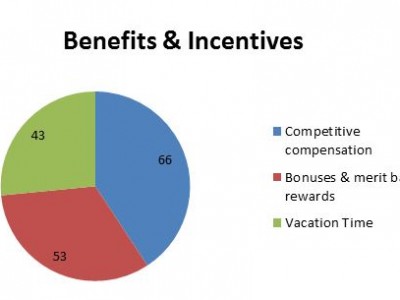Shopping for talent, for your retail company, in 2015? Keep in mind that there is little or no room for the likes of 7-day return policies or trial session when you are looking for the right candidate.
Globally, retail companies, being highly labor intensive, are heavily dependent on sound HR processes. Good employees are a precious resource, which one needs to carefully manage at all times – especially during the current talent crunch.
From all new mobile apps that simplify HR processes to performance review upgrades, there is so much happening that can help you reinvent your HR strategy.
Wish to stay up to date with the latest happenings in your business? Then read on for some interesting insights into HR retail management trends of 2015. But first let’s look at some of the common issues in the global retail market, which affects the workforce strategy.
Top 5 Labor Market Shifts that Effect HR trends in the Retail Industry
As the global economy continues to recover, technology changes rapidly, demographics keep shifting and employee expectations evolve; workforce management emerges as the single biggest task for human resources managers. Especially so in the retail sector.
Here is what retail executives tend to highlight, as the critical labor market shifts that influence HR trends in retail:
These labor market shifts add up over the years and shape new trends in HR policies in the retail sector.
Top 10 HR Trends in Retail
- Mobile and wearable technology: This is the hottest trend in the HR space, which has been growing in popularity over the last few years.
Mobile-based apps are a great tool to manage and track the work-hours, on the go, for permanent and temporary in-store sales persons; as well as call-centre personnel.Is your company still waiting to embrace HR solutions on mobile? Then do so today, to simplify employee shift scheduling and attendance tracking in retail.Wearable technology has the ability to provide real-time and in-context support for tasks at the workplace and can well be the exciting future of HR in retail.
Gadgets such as Google glasses can help HR managers hire, train and appraise employees in a blink of an eye.There is also the option of using virtual reality tools for employee training (both in-store, call-centre and corporate) and development.Of course, as with any technology, these must be used with care and the legalities (relating to privacy concerns) of implementing them must be given enough thought to avoid expensive lawsuits. - Millennial focus: PricewaterhouseCoopers report states that millennials make up 25% of the workforce in the United States.Chances are that your retail company already has a significant bunch of Gen-Y employees on the payroll and you are struggling to manage their expectations.Over 52% of retail executives believe that Millennials entering the workforce are impacting workforce strategy. Unlike the “baby-boomer” generation though, they are more likely to:
- need constant validation
- expect rapid career growth
- communicate excessively through social media
- get constant feedback on their work
- look for an exciting job opportunities, with relevant training and travel
- prefer a good work-life balance over financial perks
The challenge in front of the HR then, is to attract and retain this talent in an innovative way. Here is how:
i. Introduce regular awards and recognition-led incentive to boost employee confidence in their work, especially amongst the junior-level staff
ii. Have continuous assessments that allow employees to recognize their failings and correct them quickly, in order to be eligible for promotions rapidly
iii. Have your company’s social media experts follow latest trends that millennials relate to, in order to engage with them regularly. This will ensure that your current and prospective employees relate to your brand
iv. Include fun activities and training sessions that employees can aspire to involve themselves in
- Balance workplace diversity: While millennials are a new breed to reckon with, there is an existing baby-boomer generation (mostly in senior positions) that the HR need to engage in a different manner altogether. Managing this sort of diversity in the workforce is one of the rising concerns for 2015.Currently, only 39% of global retail employees believe that their company commits to diversity.
- Competing for best talent: Retail is an intensely competitive industry, even when it comes to acquiring and retaining quality talent. Globally, the attrition rate in the retail sector is 30-40 per cent.Thus it is important to have attractive employee engagement strategies in place, such as gamification of work, achievable sales goals and commission structures, extra time-off and increase in health benefits & other exciting variable incentives.According to the PWC report, 40% of global retail employees say higher compensation would increase loyalty and engagement with their current job.

Most important benefits and incentives to retail employees
- Make the right hiring choices: According to figures from the Bureau of Labour Statistics, the retail industry added about 300,000 employees in 2012-11, and as retailers continue to hire more employees we can only expect the momentum to continue.The customer facing sales roles typically receive thousands of applicants. The challenge is in selecting the right fit for the role, by sieving through the volumes of candidate resumes, often in a short period of time.This is where applicant tracking systems have the ability to really help cut down on time and effort spent by HR personnel on such activities.
- Enhancing cross-functional communication: All these years, the HR team used to operate in silos causing the internal communication in retail organisations to suffer. Now the focus is on ensuring that all company news and information is passes on effectively, through cross-functional planning involving HR, IT, merchants and finance.
- No more traditional performance reviews: Performance reviews are known to be negative and demotivating, across the industry. Even after 50 years of academic studies, there is still very little measureable evidence of the effectiveness of performance appraisals.So now the focus is on improving on to the performance review process that can help evaluate and better company and employee performance.
- Replace Key Performance Indicators with Key Predictive Indicators for Knowledge Workers such as:
- Customer feedback
- Risk Taking, Innovation, and Creativity
- Effective Listening and Communication Skills
- Ability to learn continuously
- Ability to delegate efficiently
- Commitment to the job
Though these factors might seem really hard to measure, they raise the right questions. The struggle is to find the correct metrics to use here.
- The Manager’s Letter – According to the book, Peter Drucker: Shaping the Managerial Mind, companies need to hold people accountable for their future contribution.
This is done by having each manager undertake the following activities:
- Outline objectives of his superior’s job and that of his own
- Sets down the performance standards that he believes apply to him.
- Lists the things he must do to attain these goals
- Lists the things his superior and the company do that help him and the things that hamper him.
- Outlines what he proposes to do during the next year to reach his goals
If his superior accepts the statement that the employee derives from the process he outlines above, the “manager’s letter” becomes the agreement under which the manager performs.
Brands such as P&G have been able to successfully rejig performance appraisals by adopting this strategy.
- After-Action Reviews (AARs): Once the work is done, it is important to analyse the job that the employee completes. Here are a few questions that managers can ask :
- What was the expectation and goal that was visualised?
- What actually happened?
- What were the positive and negative highlights of the job?
- What was the learning and how can the job be improved next time?By answering these questions, the manager can gauge the success of the activity and then suggest corrective steps for the next time.
- Legality is King: In a market scenario where hiring and firing of employees is the norm, it is important for you, as HR personnel, to keep within the legal framework and protect yourself from lawsuits.
 There is also a growing acceptance about the need for risk management. Employees of retail companies run the risk of employee accidents from loading and unloading shipments, handling of chemicals and even climbing ladders. Thus the HR team needs to have contingency plans ready to go when the situation arises.
There is also a growing acceptance about the need for risk management. Employees of retail companies run the risk of employee accidents from loading and unloading shipments, handling of chemicals and even climbing ladders. Thus the HR team needs to have contingency plans ready to go when the situation arises. - Succession pipelines more important than ever: Usually succession pipelines tend to be subjective and take long period of time to finalize. The industry is recognizing smart HR analytics that helps look for certain patterns to detect possible good successors, in a speedy and efficient manner.
- Social media community for recruitment: In its attempt to become proactive in their recruitment outreach, HR managers are slowly resorting to social media to source quality talent. Social media platforms have a large millennial population, as 91% have Facebook accounts, 39% are on Twitter and 27% on LinkedIn; thus recruiting from portals such as portals is a sound strategy.
What Retail Companies Need to do to Survive
- Remove job insecurities: 38% of retail employees are seen to have greater concern about their position changing or becoming obsolete. Retail employees are generally not full time and neither are they paid too well; especially at the entry level. This leaves employees in a state of disenchantment. Companies need to break away from this norm and provide better remuneration and benefits to all employees.

- Provide better work-timings: The industry is known for its insane shifts and erratic work-timings. Your employees deserve better, so bring about the change that you wish to see across the industry, one step at a time. This will help engage employees better and thus reduce attrition within your company.
- Build capabilities amongst employees: SAP survey states that most retailers are facing difficulty in recruiting employees with base-level skills. Owing to the shortage of good talent, retailers need to up-skill and cross-train their current employees.
- Focus on technology training: As retailers are starting to adopt mobile apps and other technology to run their stores (both online and offline), it is important for the employees to receive training on its use. The need for skills like analytics and cloud will grow. 46% of retail employees expect to be proficient in analytics in three years; 20% expect proficiency in cloud by then.
- Bring about innovations in employee career: International assignments, internships, and job rotations need to become more common among retailers in the near future. This will create excitement amongst the retail employees about their jobs and reduce their worry about slower career advancements.
- Focus on career development for employees: Mentoring programs along with leadership training programs and virtual learning or webinars are all great additions to a retail set up to aid in employee career development. Popular retailer, Macy’s, has its own “Leadership Institute” that provides training and development opportunities for every level of employee
The retail environment is fraught with incessant change when it comes down to processes, people and technology. Staying abreast with the latest HR trends in 2025 will help your company stay ahead of the curve and become a leading employer in the retail space.








